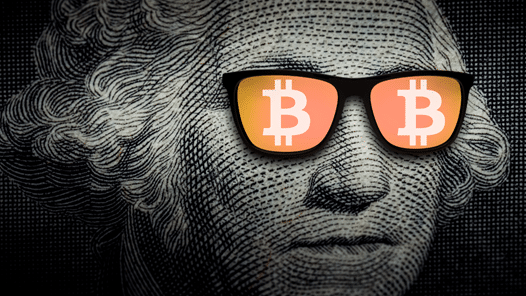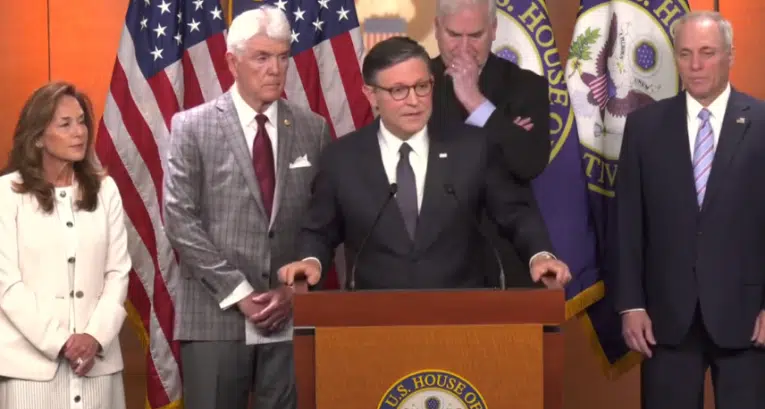
“[W]e would not proceed with this without support from Congress, and I think that would ideally come in the form of an authorizing law, rather than us trying to interpret our law to enable this.”
That was Federal Reserve Chairman Jerome Powell in March 2021, noting the fact that when it comes a central bank digital currency—a more distinct possibility after several bank failures have swept across the global financial system—that Congress simply has not authorized such an undertaking.
That is, there is no law that allows for such a digital currency. Instead, the Federal Reserve Act of allow for Federal Reserve Notes that are printed on paper. 12 U.S.C. Sec. 418, “Printing of notes; denomination and form,” states, “In order to furnish suitable notes for circulation as Federal reserve notes, the Secretary of the Treasury shall cause plates and dies to be engraved in the best manner to guard against counterfeits and fraudulent alterations, and shall have printed therefrom and numbered such quantities of such notes of the denominations of $1, $2, $5, $10, $20, $50, $100, $500, $1,000, $5,000, $10,000 as may be required to supply the Federal Reserve banks.”
This law is derived from Congress’ explicit grant of authority under Article I, Section 8 of the U.S. Constitution which states, “Congress shall have power… to coin money [and] regulate the value thereof…”
Nothing ambiguous there at all. Underscoring this point was a Jan. 2022 report by the central bank on the potential digital currency that clearly stated “The Federal Reserve does not intend to proceed with issuance of a CBDC without clear support from the executive branch and from Congress, ideally in the form of a specific authorizing law.”
But the administrative state and its advocates love ambiguity, any whatsoever, that can possibly be gleaned from often vague statements from the central bank, even if this was not one of them. For example, in Oct. 2022, Roll Call’s Calvin Reilly wrote, “Can Congress buy in to digital dollar without legislation? Central bank leaves itself room to move…”
Actually, no, it didn’t. The Fed pointed to the need for a “specific authorizing law,” and its chairman stated “we would not proceed with this without support from Congress” and specifically ruled out taking extralegal measures such as “us trying to interpret our law to enable this.”
But President Joe Biden and the U.S. Justice Department might be the one keeping his options open, not the Fed.
Several reports ordered by a March 2022 executive order by Biden sidestepped the question of legality, but per Roll Call’s Reilly, the White House has “declined to release a Justice Department document commissioned by the same executive order assessing whether legislation would be needed to issue a digital dollar.”
That would be an important document that certainly ought to be subpoenaed by the House Financial Services Committee, currently chaired by U.S. Rep. Patrick McHenry (R-N.C.).
Now, Sen. Mike Lee (R-Utah) is also introducing legislation that would explicitly prohibit a digital currency from ever being issued by the Fed.
The Fed’s Jan. 2022 report stated that one of the supposed advantages of a digital currency would be that it “would not require… deposit insurance, writing, “As a liability of the Federal Reserve, however, a CBDC would not require mechanisms like deposit insurance to maintain public confidence, nor would a CBDC depend on backing by an underlying asset pool to maintain its value. A CBDC would be the safest digital asset available to the general public, with no associated credit or liquidity risk.”
That’s a pretty strong endorsement, even as it acknowledged a lack of legal authority, but it came a year before the current banking crisis, which is predicated on not merely a lack of insurance covering all deposits—about $1 trillion is said to be uninsured—but also a lack of capital to cover bank losses and bank runs.
Moreover, provisions of Dodd-Frank that bar shareholders and bondholders from bailouts have created a perverse incentive to sell bank stocks when there is a financial crisis. Recessions are a periodic feature of modern economies, and so are the bear markets that accompany them. And yet, Congress decided to make the bank’s capital, that is, its stock price, to be the market measure of banks’ health.
Not that asset values should be guaranteed either, because it would be highly inflationary and would require the Fed to issue more notes every time a real estate values or stock prices or retirement account values tank to socialize all losses. Bad idea.
But even without that provision, the general fact remains that under fractional banking there are far more deposits, which is about $21 trillion, than there are Federal Reserve Notes in circulation, just $2.9 trillion. Moreover, banks don’t really sit on cash when it is deposited, they invest it or make loans keep it moving to keep the velocity of money moving, because if they were to sit on it at any stage of economic activity, there would not be enough money on deposit further downstream to cover everyone else’s obligations.
Since the crisis began, and Silicon Valley Bank and Signature Bank were put into receivership, regional bank stocks are down 27 percent the past month. First Republic Bank is down 87 percent the past month. The run is not on deposits, per se, but on bank stocks.
So, now we have a crisis that is tailor made for a digital currency, and yet, it remains a terrible idea. It’s the same reason not to guarantee all deposits is because it remove the incentive to invest, make loans and to take risks, by both financial institutions and individuals. If the digital currency is guaranteed but not the financial assets we might buy with it, it will create a perverse incentive to sell. And if all assets are guaranteed, too, it could very likely nationalize the entire U.S. economy, leaving little liberty in its wake.
Robert Romano is the Vice President of Public Policy at Americans for Limited Government Foundation.





